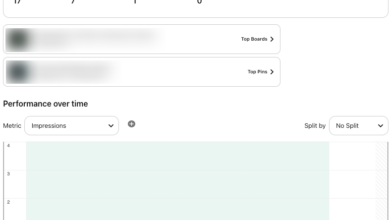
International Facebook Global Pages A Deep Dive
International Facebook global pages offer a powerful way to connect with audiences worldwide. This comprehensive guide explores the intricacies of creating, managing, and optimizing these pages for maximum impact, from defining your target audience to measuring success. We’ll dissect content strategies, community building techniques, advertising best practices, and even navigate potential challenges along the way.
Understanding the nuances of international communication is crucial. This guide delves into the specific requirements for crafting compelling content that resonates with diverse audiences. From tailoring your messaging to local customs to employing multilingual support, we’ll provide actionable strategies for success in the global digital marketplace.
Defining International Facebook Global Pages
International Facebook global pages represent a crucial component of Facebook’s platform, enabling businesses, organizations, and individuals to connect with a global audience. These pages transcend geographical boundaries, fostering a worldwide community and offering unique opportunities for engagement and interaction. Understanding their characteristics, purpose, and types is vital for effective utilization and strategic planning.These pages are specifically designed to target a broader audience than a local Facebook page, and facilitate communication across diverse cultural contexts.
They require careful consideration of language, cultural nuances, and diverse perspectives to effectively engage a global community. They are distinct from local pages in their scope, content strategy, and overall approach to reaching a wider audience.
Setting up international Facebook global pages can be tricky, but mastering Facebook Dynamic Ads is key for targeted reach. Learning the ropes of Facebook Dynamic Ads 101 facebook dynamic ads 101 will help you craft highly personalized ad campaigns that resonate with your global audience. Ultimately, this granular approach will boost your international Facebook presence and help you connect with a wider range of potential customers.
International Facebook Page Types
International Facebook pages cater to various needs and purposes. They exist in different forms, each with its own characteristics. Recognizing these distinctions is key to understanding the diverse range of users and content. A thorough understanding of the types of pages enables strategic planning and effective content creation.
- Business Pages: These pages are designed to promote products or services on a global scale. They are crucial for businesses looking to expand their reach beyond local markets. Content strategies typically focus on highlighting product features, addressing customer needs, and building brand awareness in a global context. For example, a clothing company might showcase their diverse collections through targeted advertising campaigns to specific regions.
Detailed information about their services, customer support, and shipping policies, translated into multiple languages, is essential.
- Non-Profit Pages: Non-profit organizations leverage international pages to raise awareness, solicit donations, and advocate for their cause worldwide. These pages need to connect with global audiences on a compassionate and relatable level. Content focuses on highlighting the organization’s mission, achievements, and impact, often using compelling stories and visual elements to evoke emotional responses. For example, an environmental organization might share compelling stories about their conservation efforts in different parts of the world to garner global support.
- Public Figure Pages: Public figures, including celebrities, influencers, and politicians, utilize international pages to connect with their global fan base. These pages often act as a platform for sharing personal updates, engaging in discussions, and promoting their brand. Content frequently includes personal insights, behind-the-scenes glimpses, and interactive Q&A sessions to foster a sense of connection. A well-known author, for instance, might use their page to announce book releases, share excerpts, or host online book clubs.
Comparing and Contrasting Page Types
The following table highlights key distinctions between business, non-profit, and public figure international Facebook pages.
| Feature | Business Page | Non-Profit Page | Public Figure Page |
|---|---|---|---|
| Primary Purpose | Promote products/services globally, generate revenue, build brand awareness | Raise awareness, solicit donations, advocate for a cause, impact society | Connect with fans, promote personal brand, engage in discussions, potentially influence opinions |
| Target Audience | Potential customers, investors, and partners worldwide | Global supporters, volunteers, donors, and stakeholders | Fans, followers, and people interested in their views and work |
| Content Strategy | Product showcases, customer testimonials, promotional campaigns, industry news, FAQs | Impact stories, success stories, call-to-action campaigns, educational content, volunteer opportunities | Personal updates, behind-the-scenes content, Q&A sessions, interactive activities, promotional content related to work/brand |
Content Strategies for International Pages
Reaching a global audience on Facebook requires a nuanced approach. Simply translating your content isn’t enough; understanding and catering to diverse cultural contexts is crucial. Effective international Facebook strategies involve crafting compelling content that resonates with different audiences while adhering to best practices in localization and cultural sensitivity.Creating meaningful connections with international audiences demands a proactive and empathetic approach.
This involves more than just translating text; it necessitates a deep understanding of the cultural nuances and preferences of each target market. Content strategies must be tailored to specific demographics, languages, and communication styles.
Content Creation for International Audiences
Crafting compelling content for an international audience necessitates a deep understanding of diverse cultural preferences and communication styles. Content should not only be accurate but also culturally appropriate and engaging. Consider the following elements:
- Highlighting local stories and perspectives: Sharing content that reflects the experiences and values of your target audience is essential. This could involve featuring local influencers, showcasing local events, or showcasing stories from people in the community. This demonstrates genuine interest in the audience and builds trust.
- Utilizing local celebrities and personalities: Partnering with local celebrities or influencers can greatly enhance the reach and impact of your content. This approach can create a sense of authenticity and credibility, which is particularly valuable in building trust with international audiences.
- Creating engaging visuals: Visual content, such as images and videos, often transcends language barriers. Images and videos can effectively convey complex ideas and emotions. High-quality visuals are key to making a positive first impression.
Localizing Content for Diverse Cultures
Successfully connecting with international audiences necessitates a thorough localization strategy. This extends beyond mere translation; it involves adapting content to resonate with different cultural values and norms.
- Cultural sensitivity in language: Ensure that your language is not only grammatically correct but also culturally appropriate. Consider idioms, slang, and cultural references that might be misinterpreted or offensive in another context.
- Adapting tone and style: The tone and style of your content should be adjusted to reflect the cultural norms of your target audience. Humor, for example, can vary significantly across cultures, so use it cautiously and consider the cultural context.
- Respecting cultural norms: Be mindful of cultural norms and traditions. Avoid topics or images that might be considered offensive or inappropriate in certain cultures.
Importance of Cultural Sensitivity
Cultural sensitivity is paramount in international content creation. Ignoring cultural nuances can lead to misinterpretations, offend audiences, and damage your brand reputation. Consider the cultural contexts of your target audience to ensure that your content is received positively.
- Understanding cultural differences: A thorough understanding of different cultural values, beliefs, and customs is essential to avoid misunderstandings and misinterpretations.
- Seeking diverse perspectives: Involve people from different cultural backgrounds in the content creation process to gain diverse perspectives and ensure cultural sensitivity.
- Avoiding stereotypes: Be mindful of potential stereotypes and avoid perpetuating harmful generalizations.
Resources for Internationalization Strategies
Leveraging available resources can significantly aid in crafting effective international content strategies. These resources provide valuable insights and tools for creating content that resonates with diverse audiences.
- Language learning platforms: Platforms like Duolingo and Babbel offer valuable resources for learning different languages.
- Cultural awareness guides: Numerous guides and resources provide insights into diverse cultures and customs.
- International marketing agencies: Consultants and agencies specializing in international marketing can offer valuable expertise and support.
Content Formats for International Facebook Pages
The table below illustrates different content formats suitable for international Facebook pages. Different audiences respond to diverse content formats. Selecting the right format is critical for effective engagement.
Engagement and Community Building
Building a thriving community around your international Facebook page requires a multifaceted approach that goes beyond simply posting content. It demands understanding your audience, tailoring your interactions, and fostering a sense of belonging. This involves not just attracting followers but nurturing relationships and encouraging active participation. A strong community will ultimately translate to increased brand loyalty, advocacy, and positive word-of-mouth marketing.
Ever wanted to connect with a global audience on Facebook? International Facebook global pages are a fantastic way to reach people worldwide. But, creating compelling video content is key to grabbing attention, especially when you’re competing with other brands. To make your Facebook videos stand out, check out the best video editing apps for Instagram free paid apps.
This comprehensive guide will help you create engaging content, whether you’re using free or paid apps. This is vital for any international Facebook page looking to maximize its impact.
Effective Methods for Engaging with International Audiences, International facebook global pages
Engaging diverse international audiences requires a sensitive and strategic approach. Avoid generic messages and instead personalize interactions. Acknowledge cultural nuances and adapt your communication style accordingly. Recognizing and respecting cultural differences in communication styles, humor, and etiquette is crucial.
Strategies for Building a Strong Community Around an International Facebook Page
A strong community thrives on consistent interaction and a sense of shared purpose. Encourage user-generated content by running contests, challenges, or Q&As. Host live sessions or webinars to facilitate direct engagement and address audience queries in real-time. Consider creating themed groups or communities within the main page to foster smaller, more focused interactions. Regularly engaging with posts, responding to comments, and addressing concerns demonstrates genuine interest in your audience.
The Role of Multilingual Support in Engaging with Diverse Audiences
Multilingual support is essential for fostering a welcoming and inclusive environment. Providing content in multiple languages demonstrates respect for your diverse audience and makes your page accessible to a wider range of people. This enhances understanding, builds trust, and creates a more inclusive environment. Translate not just your posts but also captions, descriptions, and even community guidelines to ensure clarity and inclusivity.
Examples of Successful Community Building Strategies
Many brands have successfully built vibrant communities on Facebook. For example, a global fashion brand might host a monthly photo contest encouraging users to showcase their outfits in different locations, fostering a sense of community while showcasing their products. An educational organization might organize interactive workshops and webinars in different languages to cater to a global audience.
Engagement Tools and Techniques
Effective community building often involves a mix of tools and techniques. This table highlights some key strategies:
| Tool/Technique | Description | Benefits |
|---|---|---|
| Contests and Challenges | Run contests or challenges that encourage user-generated content, fostering creativity and engagement. | Increased user participation, content diversity, and brand visibility. |
| Live Q&As and Webinars | Host live sessions to answer audience questions, address concerns, and provide direct interaction. | Enhanced audience engagement, improved brand transparency, and greater audience trust. |
| Themed Groups/Communities | Create smaller, focused groups within the main page to encourage more intimate and targeted discussions. | Facilitates niche discussions, fosters a more personal connection, and caters to specific interests. |
| Multilingual Content | Translate content into multiple languages to cater to a wider audience and improve accessibility. | Broadens reach, enhances understanding, and fosters inclusivity. |
| Regular Engagement with Posts | Actively participate in conversations, respond to comments, and address concerns promptly. | Builds rapport with the audience, showcases responsiveness, and fosters trust. |
Measurement and Analytics

Tracking the success of an international Facebook page requires a multifaceted approach that goes beyond simply counting likes. Effective measurement involves understanding the nuances of diverse audiences, analyzing performance across different regions, and identifying key indicators that truly reflect the health and growth of your global presence. This requires a deep dive into the data and a strategic interpretation of the insights it provides.A successful international Facebook page transcends simple vanity metrics.
Figuring out how to manage international Facebook global pages effectively often requires a strategic approach. Understanding the strengths, weaknesses, opportunities, and threats inherent in each target market is key. This is where a proper SWOT analysis comes in handy; learning the right way conduct swot analysis helps you pinpoint the competitive advantages and potential pitfalls of your global Facebook presence.
Ultimately, a well-executed SWOT analysis will guide your strategies for maximum impact on these international Facebook pages.
It’s about fostering meaningful connections, driving engagement, and ultimately achieving tangible results within each targeted region. A strong analytics strategy is the compass guiding you through this process, enabling you to fine-tune your content, tailor your approach to specific cultures, and ultimately maximize your reach and impact.
Key Performance Indicators (KPIs) for International Pages
Understanding which metrics are most crucial is essential. Simply put, international Facebook pages require a tailored set of KPIs that move beyond the typical likes and shares. Metrics such as reach, engagement rate, and conversion rates within each region are paramount. For example, if your goal is to drive sales, conversion rates are crucial. If your aim is brand awareness, reach and impressions become more important.
Tracking Engagement and Growth Across Regions
Engagement and growth vary significantly based on regional preferences and cultural contexts. Therefore, analyzing engagement metrics by region is critical to understand what resonates best in each location. Tools like Facebook Insights allow you to segment your audience by region, which is vital to tailoring your content and approach to each area. This data is critical to optimizing campaigns for maximum impact in each region.
Analyzing Audience Demographics and Interests
Knowing your audience is key. Understanding the demographics and interests of your audience within each region enables you to craft targeted content that resonates with their specific needs and preferences. This deep understanding of your audience in different markets is crucial for optimizing your content and achieving meaningful engagement. For example, if your target demographic in one region is significantly younger than another, you would adjust your content accordingly.
Essential Analytics Tools for Monitoring Page Performance
| Tool | Description | Metrics |
|---|---|---|
| Facebook Insights | Facebook’s built-in analytics tool. | Reach, engagement rate, post performance, audience demographics, and geographic data. |
| Google Analytics | Provides comprehensive website analytics, including traffic from Facebook. | Website traffic from Facebook, conversion rates, bounce rates, and user behavior. |
| Hootsuite/Buffer | Scheduling tools that integrate with Facebook and other platforms. | Post scheduling, analytics on post performance, and insights into audience engagement patterns. |
| Sprout Social | Social media management platform with advanced analytics. | Social listening, sentiment analysis, and detailed engagement reports. |
| SimilarWeb | Provides competitor analysis and market insights. | Competitive analysis, market share, and audience demographics. |
Advertising and Promotion: International Facebook Global Pages

Reaching international audiences on Facebook requires a nuanced approach beyond simply translating your posts. Effective advertising hinges on understanding cultural nuances, local languages, and the specific interests of target demographics. A well-defined strategy, coupled with data-driven insights, can significantly boost your reach and engagement.
Strategies for International Facebook Ads
International Facebook ad campaigns necessitate a meticulous strategy. Understanding the target audience’s cultural context is paramount. For instance, humor that resonates in one culture might be offensive in another. Consider using local influencers or partnering with native speakers to enhance authenticity and credibility. Thorough market research is essential to identify the most impactful ad creatives and messaging.
Successful International Ad Campaigns
Numerous brands have achieved success with international Facebook ad campaigns. A compelling example is a clothing retailer that targeted young professionals in different countries. By adapting their visuals and language, they effectively connected with the specific fashion preferences and interests of each region. They achieved impressive results by creating tailored ad copy for each country, ensuring that the messages resonated with the specific cultural context.
Importance of Targeting Demographics and Interests
Precise targeting is crucial for effective ad spend. Targeting specific demographics, such as age, gender, location, and interests, allows for a more focused approach. This tailored approach ensures that ads are displayed to individuals most likely to be interested in the product or service. For instance, a language learning app might target students and young professionals in specific countries.
By utilizing Facebook’s detailed targeting options, businesses can maximize their return on investment (ROI).
Benefits of Facebook Ads Manager for International Campaigns
Facebook Ads Manager provides valuable tools for international campaigns. It allows for the creation and management of ads across multiple languages and locations, facilitating a streamlined approach to international advertising. Furthermore, Ads Manager offers detailed analytics, enabling businesses to track performance metrics and optimize their campaigns in real time. This allows for continuous improvement and adjustment based on actual performance, making it a powerful tool for global marketing.
Facebook Ad Targeting Options
Effective targeting on Facebook is key to maximizing campaign effectiveness. Understanding the available options and how to utilize them correctly is critical for reaching the desired audience. This section provides a table illustrating various Facebook ad targeting options.
| Targeting Option | Description | Example |
|---|---|---|
| Location | Targeting ads based on specific geographic areas, cities, or countries. | Targeting ads for a travel agency to people in specific cities in Europe. |
| Demographics | Targeting ads based on age, gender, relationship status, education level, and more. | Targeting ads for a luxury car to high-income individuals in specific age groups. |
| Interests | Targeting ads based on user interests, hobbies, and passions. | Targeting ads for a gaming company to people interested in specific genres of video games. |
| Behaviors | Targeting ads based on user actions and online activity, such as purchase history, website visits, and app usage. | Targeting ads for a clothing store to people who have previously visited the store’s website. |
| Custom Audiences | Targeting ads based on existing customer lists or website visitors. | Targeting ads to users who have previously visited a website. |
| Lookalike Audiences | Creating new audiences similar to existing customers or website visitors. | Creating a new audience of users similar to existing customers. |
Challenges and Considerations
Managing international Facebook pages presents unique hurdles beyond the typical social media challenges. Navigating diverse cultures, languages, and technical intricacies requires a proactive and adaptable approach. Successfully connecting with global audiences hinges on understanding and addressing these complexities.Effective management of international Facebook pages necessitates a deep understanding of potential obstacles and proactive strategies to overcome them. This involves anticipating and addressing cultural sensitivities, linguistic barriers, and technical difficulties.
Furthermore, establishing robust communication channels for feedback and complaints is essential for building trust and maintaining positive relationships with international audiences.
Common Challenges in Managing International Pages
International Facebook pages face several common challenges. Varying levels of internet access, differing social media etiquette, and inconsistent digital literacy across regions can impact engagement and interaction. Different cultural interpretations of content and tone can lead to misunderstandings or offense, impacting the overall success of the page. The sheer scale and diversity of international audiences make consistent monitoring and responsiveness difficult.
Ultimately, maintaining a consistent brand voice and message across diverse cultural contexts presents a significant challenge.
Cultural and Linguistic Barriers
Understanding cultural nuances is critical. Humor, for example, often translates poorly across cultures, and a post that resonates in one region might be offensive or incomprehensible in another. Linguistic differences require careful translation and localization efforts. A literal translation might not capture the intended meaning, leading to miscommunication and potentially damaging brand perception. Using a professional translation service is crucial to ensure accurate and culturally appropriate messaging.
Understanding cultural norms around social media etiquette is also paramount. In some cultures, direct feedback might be considered rude, while in others, silence could signify disinterest.
Addressing Technical Issues
Time zone differences necessitate careful scheduling of posts and responses. Content needs to be accessible and relevant to different time zones, preventing crucial interactions from going unnoticed. Consistent monitoring and engagement are essential, especially with potentially large and geographically dispersed audiences. Errors in language translation, if not addressed promptly, can lead to inaccurate information or misinterpretations, impacting the brand’s reputation.
A multilingual team, or a reliable translation partner, can help mitigate these risks.
Handling Feedback and Complaints
International audiences may express feedback and complaints in different ways. Actively monitoring comments and messages is essential. Providing prompt and courteous responses, even to negative feedback, demonstrates respect and commitment to the audience. Addressing complaints effectively, even when differing cultural norms are at play, is crucial for maintaining a positive brand image. Utilizing translation services to ensure accurate communication with international customers is important.
Potential Challenges and Their Solutions
| Challenge | Description | Potential Solution |
|---|---|---|
| Cultural Differences | Misunderstandings arising from differing interpretations of humor, tone, and social etiquette. | Conduct thorough cultural research for each target market. Employ native speakers to review content before posting. Utilize culturally sensitive tone and language. |
| Language Barriers | Difficulties in conveying the intended message due to language differences. | Utilize professional translation services for all content. Provide multilingual support options (e.g., multiple language options on the page). Employ native speakers to monitor comments and messages. |
| Time Zone Differences | Inconsistent response times and difficulty reaching audiences in different time zones. | Schedule posts strategically to maximize visibility in different time zones. Utilize scheduling tools and consider employing staff across time zones. Implement a 24/7 monitoring system. |
| Technical Issues | Difficulties in maintaining website functionality, or navigating the site, across various browsers and devices. | Regularly test website functionality on different devices and browsers. Ensure website and page content is accessible. Utilize website analytics to identify and fix potential problems. |
| Feedback Management | Difficulties in managing feedback and complaints from diverse international audiences. | Implement a system for collecting and responding to feedback. Utilize translation services to respond accurately. Establish clear guidelines for complaint resolution. |
Concluding Remarks
In conclusion, effectively managing international Facebook global pages demands a multifaceted approach. By carefully considering content strategies, building strong communities, and employing effective advertising techniques, businesses and organizations can leverage these platforms to reach a wider audience and achieve significant growth. Understanding the potential challenges and proactively addressing them will be key to sustained success.





